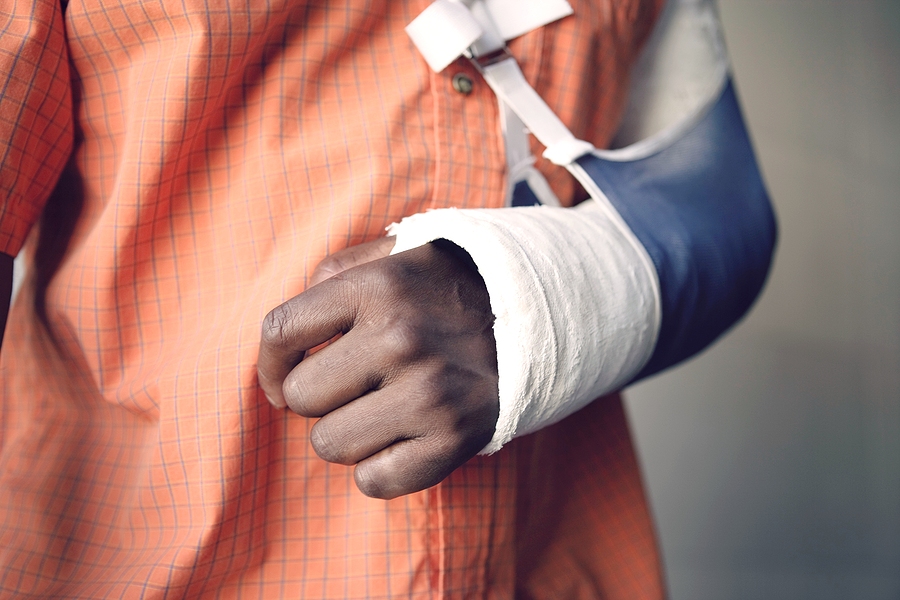Construction zones fill Oklahoma’s skyline, from Tulsa road work to new commercial towers in Oklahoma City. Their heavy machinery, elevated platforms, and fast-moving crews create a setting where injuries can happen in seconds. Knowing what to do right after an accident protects your health and preserves your right to compensation. The following guide walks you through the critical steps and explains the legal options available under Oklahoma law.
Immediate medical care comes first
Your priority is safety. If you sustain a blow to the head, a deep cut, or any pain that hampers movement, call 911 or visit the nearest emergency room. Even seemingly minor injuries—sprains, small lacerations, mild dizziness—deserve professional evaluation. Some internal injuries develop gradually, and early treatment creates medical records that link the harm to the incident.
Notify your supervisor and document everything
Oklahoma workers’ compensation rules require prompt notice of an on-the-job injury. Tell a foreman, project manager, or safety officer as soon as practical. Provide date, time, and a brief description of what happened. Keep a personal log of whom you told and when. Store all paperwork you receive, including incident reports or medical referral slips. A written trail reduces disputes later.
Preserve evidence at the scene
If your condition allows, photograph the area before anything changes. Capture defective equipment, missing guardrails, slick surfaces, or improper signage. Get wide-angle shots and close-ups. Note the weather and lighting. Collect names and phone numbers of coworkers or bystanders willing to confirm what they saw. Quick action matters because construction sites are dynamic; hazards can disappear once cleanup crews arrive.
Understand workers’ compensation in Oklahoma
Most construction employers in Oklahoma must carry workers’ compensation insurance. This no-fault system pays medical bills and a portion of lost wages regardless of who caused the accident. To start a claim, your employer should complete the “Employer’s First Notice of Injury” and send you for authorized treatment. If your claim stalls or benefits stop prematurely, you can file a Form 3 with the Oklahoma Workers’ Compensation Commission to request a hearing.
Benefits typically include:
- Medical care with no co-pays or deductibles
- Temporary total disability payments—70 percent of average weekly wages up to a statutory cap
- Permanent disability compensation for lasting impairment
- Vocational rehabilitation when injuries prevent a return to former duties
Keep in mind that accepting workers’ compensation does not prevent additional claims against responsible third parties.
Explore potential third party claims
Construction projects involve many entities—general contractors, subcontractors, equipment manufacturers, property owners, and utility companies. If someone other than your direct employer contributes to your injury, you may pursue a separate personal injury action.
Examples include:
- A subcontractor’s crane operator drops materials onto your work zone.
- A scaffolding manufacturer releases defective planks that collapse.
- A negligent driver crashes through roadside barriers into a work crew.
Unlike workers’ compensation, a third-party lawsuit can seek full lost earnings, pain and suffering, and other non-economic damages. Oklahoma applies modified comparative fault in civil suits, so your recovery is reduced by your percentage of blame and barred entirely if you are 51 percent or more at fault. Strong evidence from the outset is crucial to minimizing any fault attributed to you.
Watch the deadlines
- Timelines differ depending on the claim type:Workers’ compensation: Report the injury within 30 days to avoid benefit delays, and generally file any contested claim within one year of the accident or last medical treatment.
- Third-party lawsuit: Oklahoma’s statute of limitations for personal injury is two years from the date of harm.
Missing a deadline can extinguish valuable rights, so mark critical dates and consult counsel early.
Avoid common mistakes after a site injury
- Giving recorded statements without advice – Insurance adjusters may request an immediate interview. Politely decline until you speak with an attorney.
- Posting on social media – Photos of weekend activities or comments about the accident can be misconstrued. Keep profiles private and avoid discussing the case online.
- Skipping doctor appointments – Inconsistent treatment allows insurers to argue your injuries healed or were minor. Follow prescribed therapy and attend all follow-ups.
- Returning to heavy work too soon – Pushing through pain can worsen injuries and endanger coworkers. Obtain a written clearance from your physician before resuming full duties.
How an Oklahoma injury lawyer can help
A seasoned construction accident attorney evaluates every avenue of recovery. They gather maintenance logs, OSHA citations, subcontractor agreements, and safety manuals to identify all at-fault parties. They coordinate with engineers and medical experts to prove causation and the full extent of your losses. Negotiating with multiple insurers can become complex; legal representation levels the playing field and often increases net compensation even after fees.
For workers worried about retaliation, Oklahoma law prohibits employers from firing or discriminating against employees who file workers’ compensation claims. Your lawyer can pursue additional remedies if such conduct occurs.
Conclusion
A construction injury can interrupt income, require lengthy rehabilitation, and strain family finances. Acting quickly—seeking medical help, documenting the scene, filing the correct forms, and contacting legal counsel—sets the groundwork for a successful claim. Oklahoma’s workers’ compensation benefits provide essential support, but do not overlook potential third-party actions that may offer greater recovery. Planning each step methodically helps you regain stability and moves you toward full physical and financial recove

